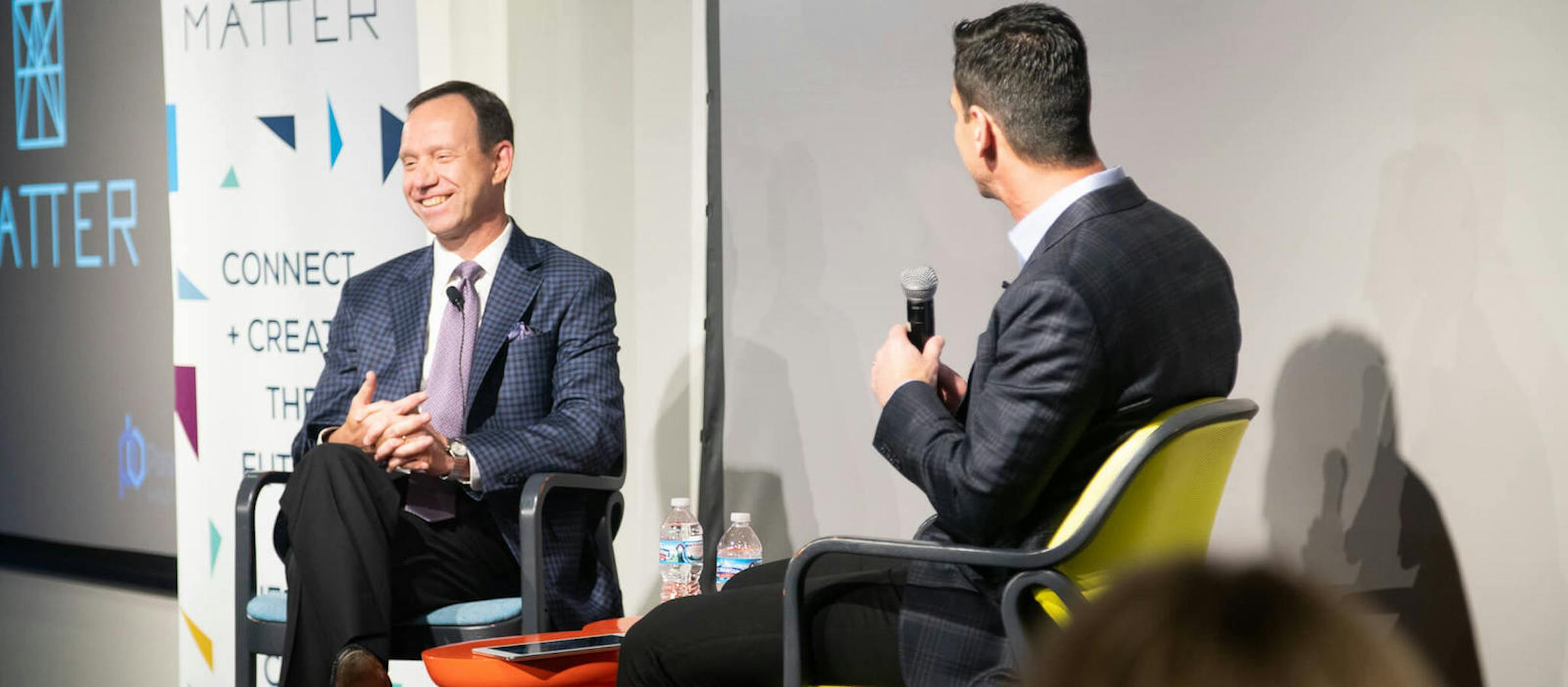Tales from the Trenches with Paul Edick, CEO of Xeris Pharmaceuticals
In April, Paul Edick, CEO of Xeris Pharmaceuticals, joined us at MATTER to share insights and learnings from his remarkable entrepreneurial journey.
Xeris is the latest in Paul’s impressive track record leading biopharma startups like Durata Therapeutics (Nasdaq: DRTX), Ganic Pharmaceuticals and MedPointe Healthcare, Inc. Paul came out of retirement to take the helm at Xeris in 2017, and has since taken the company public, raised over $200 million in capital, completed several preclinical and clinical studies, established a new corporate headquarters in downtown Chicago and grew its staff to over 100 employees. This summer, the company plans to commercialize its first product, which delivers the life-saving hormone glucagon to people with diabetes who experience a severe drop in blood sugar.
Below are some of our key takeaways from Paul’s talk.
An ‘accidental’ leap into healthcare
“I started my career in Procter and Gamble selling case food: Duncan Hines cake mixes, Pringles Potato Chips, Crisco shortening. My customers were grocery store managers, and they’re a tough audience. I grew up being a sales guy.
“I ended up in the pharmaceutical business almost by accident. I was in a grocery store, convincing a store manager why he should put a pile of Pringles next to the Budweiser, and a guy in a suit was watching me in the corner. He handed me his business card and said, ‘You’re good at selling, and we like people who can sell’. I’ll never forget him – it turns out he was from J&J. Three weeks later, I was working for J&J.”
Why good leaders become irrelevant
“Surround yourself with people who are experts at what they do. I’ve told my teams that my goal is to become irrelevant in my company. If I become irrelevant, that means decisions are being made at a level in the company that doesn’t all bubble up to the top. I am in the middle of a lot of things — I walk around all the time and am constantly poking at things — but the company runs. I sometimes pinch myself because I’m surrounded by people who are all way better than I am.”
On building the right team
“There is failure in everything you do, and something I learned early on was that not putting the right team together leads to failure.
“As a district manager, I hired 12 sales reps in my image. Bad idea. I learned, through failure, that hiring in your own image does not get you people who are better than what they do than you are. Putting the right kind of team together, it was like a rocketship took off. I learned at an early age that I know what I know, and I have a certain set of capabilities. If I hire a bunch of Paul Edick’s, I’m going to fail miserably.
“We operate our company very much as a social system. We focus time and attention on interdependence – there aren’t silos. We purposely build the organization from a functionality before structure.”
“We operate our company very much as a social system. We focus time and attention on interdependence — there aren’t silos. We purposely build the organization from a functionality before structure.”
Mission over money
“The most valuable thing for us has been understanding what the mission is — not the mission statement, but what is it that we’re trying to build? It’s not about the money or size. Ask yourself: What is going to be the fulfilling aspect of what it is you’re building?
“The most valuable thing for us has been understanding what the mission is — not the mission statement, but what is it that are we’re trying to build?”
“A big motivator for Durata was that it was going to change medicine. It was going to change the way care was delivered. It’s drugs that are going to change lives, and medicines that are going to change medicine and cut costs all at the same time. That’s meaningful and worth doing. We don’t just want to make another drug in a different category.”
Reimagining problems as opportunities
“There are problems that happen all the time. But when you take a step back and flip it around, you can ask yourself, ‘What’s the opportunity there?’
“There are problems that happen all the time. But when you take a step back and flip it around, you can ask yourself, ‘What’s the opportunity there?’
“The biggest challenge is getting people to see [the opportunity]. When something not so good happens, there’s a kind of mourning process: There are stages, and I go from the beginning to the end pretty quickly. You have to ask, What can we do with this? If you spend time on what went wrong, you’re not going to find what to do with it. You’re just going to find more reasons [to explain] what went wrong and dig into the wrong thing.”
Problem solving before there’s a problem
“We have contingency plans. You don’t know what might go wrong, but you have to think about the What ifs. We spend quite a lot of time on that. What if you have an issue with clinical studies? What if you have an issue with manufacturing? What could go wrong? Contingency plans aren’t always fully developed, but at least you’ve put some mental time into problem solving before there’s a problem.”



